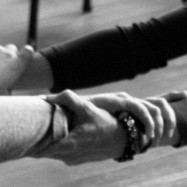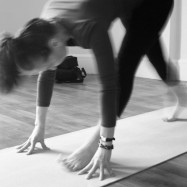What are Somatics and Somatic Movement?
What is Somatic Movement
There is a lot of talk about Somatic Movement and Somatics these days, but what is it? And how can it help you?
Somatic derives from the word Soma, which simply means of the body as opposed to of the mind. In movement this generally means moving and developing internal awareness rather than a focus on the making or doing of specific shapes – which would be more of an external sense of the body. The words that are often used for these awareness’s are exteroception for sensing outside, proprioception for sensing spatial form and interoception for internal sensing. These facilities for body sensing can be developed, the more you practice the more you can feel, the more you can feel, the more the body informs your consciousness. This is often termed ‘bottom-up processing’, a conversation and intelligence from the body compared with ‘top-down’ from the mind.
Practices like Yoga, Pilates, Feldenkrais, Chi Gung and Continuum Movement are all essentially somatic practices- that can involve in lesser or greater qualities this inner sensing.
Hanna Somatics
Some Somatic practices, like Hanna Somatics, have a focus on a specific body system. Hanna Somatics is a mind-body practice, developed by Thomas Hanna in alignment with Feldenkrais and Alexander technique, where the focus is specifically on the neuromuscular system. The neuromuscular system is the connection of the nervous system to the skeletal muscles in managing muscular tone (or tension) across the body. This way of working understands that the brain has, from whatever cause, developed a habituated way of seeing muscle activity and tension across the body, and may not sense certain patterns of muscular activity or inactivity. Once the nervous system has regained sensing into areas of habitual muscular tightness, weakness, or ‘amnesia’, it can automatically and unconsciously rebalance the tone of the muscles through nervous system signalling.
These Hanna Somatic practices are explored through turning certain groups of muscle on, off and resting, to help the brain see and adjust the holding pattern. And as these are generally patterns that support functional movement, they are also patterns that underpin the more complex yoga posture in practice.
I often use these patterns in creative ways to enhance and prepare the body for practice. In general classes I often like to ‘mark out the territory’ through inner sensing before practising yoga postures and flows, or in restorative sessions I like to use these practices to undo unconscious tensions in the nervous system in preparation for deep relaxation. For clients that have long term chronic muscular imbalances, hands on work can greatly enhance the brain’s ability to sense or ‘see’ where there is little feedback coming from the body.
Somatic Movement
The branch of Somatics that I have been most drawn to is Somatic Movement, exploring in practices and mind-body therapy. The broadness of the Somatic Movement approach allows the practitioner or therapist to follow many different pathways in body movement work co-creatively with clients eg Developmental Movement Patterns, Embodied Anatomy, Somatic Psychology and Authentic Movement. And importantly includes and understands that when we move into body-based awareness, when we change things around – we may also encounter some expression of feeling and even emotion. And that if emotional content arises, for example from changing patterns of muscular tone that may have initially arisen as a necessary muscular defence, or its opposite when weak and inactive muscles need to bring themselves forward, then these expressions of feeling or emotion also need to be acknowledged and met in practice.
Merete Brantjberg’s Resource Orientated Skills Training (ROST), like Hanna Somatics, also explores neuromuscular patterns in activation and release but doesn’t limit these explorations to the merely postural and biomechanical. She has more focus on the somatic and psychological content that may emerge when we explore muscular holding and weakness. She explores what may come forth emotionally and relationally when we shift these neuromuscular patterns and also what resourcing we may facilitate by developing body based neuromuscular awareness.
So Somatic Movement can encompass the practices that we can use to deepen our listening to the body and ways of understanding what the body is expressing, but importantly includes ways of meeting whatever comes forth in this conversation and what can be informed by and held in the safety of supervised relational practice.
Client testimonials
“I found the sessions very helpful. My understanding of what I experienced is related to trauma. I do feel very safe, contained and held by Mel whether online or in person. She is very highly attuned to what others embody and carry physically and how this is interconnected holistically and how this affects us and our way of being in the world. I find the depth, breadth and integrated nature of her knowledge an absolute joy and to work with her is transformative. In my experience this is very rare.”
“As a practising psychotherapist this particular experience felt much more helpful in that it was immediate, deep and integrated. This usually takes longer to happen in talking therapy. For me this is very therapeutic work and my knowledge and experience of therapy supports me in this practice.”
“I found the somatic practices very powerful. I was able to connect with my body on a more nuanced level which felt quite deep. Even just being witnessed in my movements was very powerful and brought up some deep feelings. This experience helped me to integrate earlier childhood experiences and how they may have impacted (and still are impacting me) physically. “
“I have been struggling with trying to recover from what I describe as relational trauma. I have been in therapy for a long time and somehow for myself the channel of ‘ talking’ has lost his healing power and I can see that I could keep talking about this painful situation for hours but without creating any shift in my state of mind and level of suffering. I have found the sessions really helpful “



